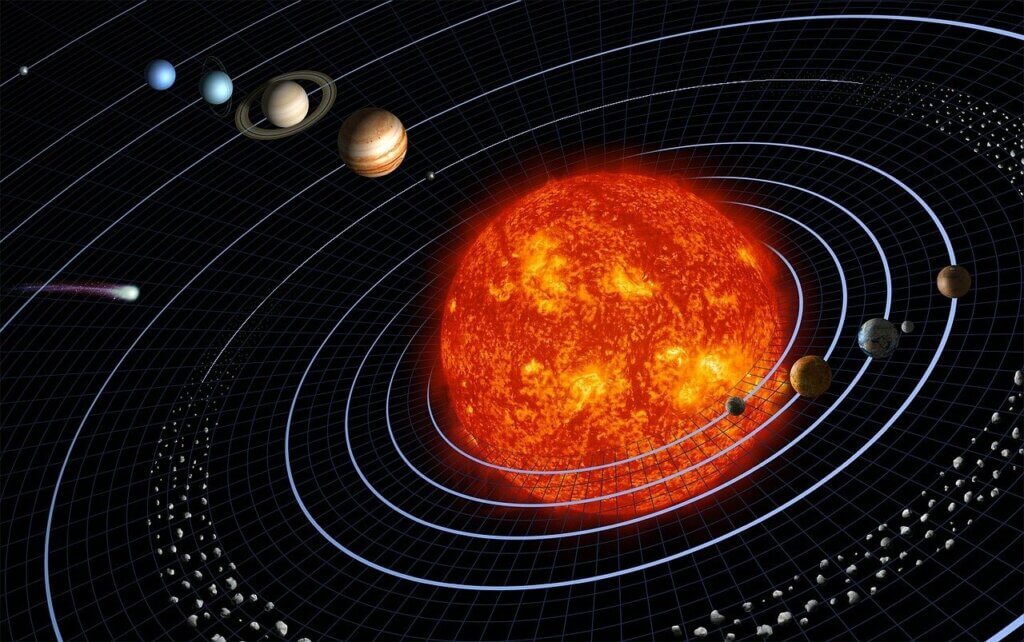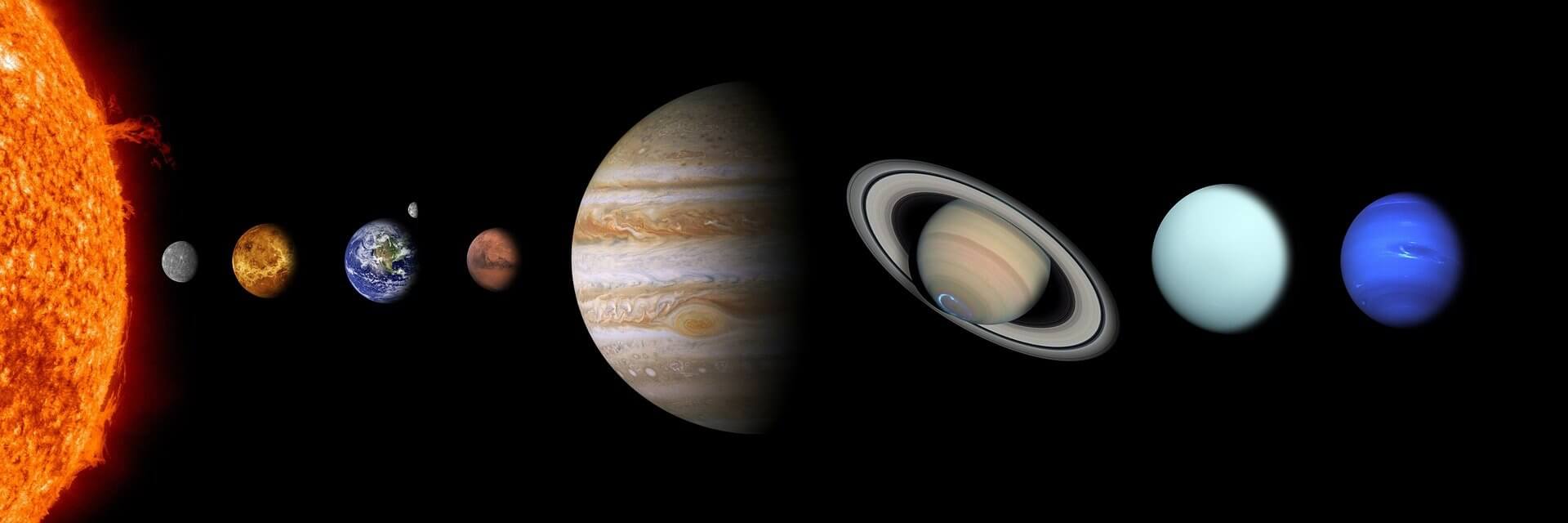From the Big Bang to date, man has always been a curious animal. Walking the Earth, hunting and gathering was never enough. And even if our days were spent toiling for food and shelter, the star-studded night skies always made us ponder the bigger questions of the great beyond—literally and philosophically.
That quest has driven us since the beginning to explore the unknown and propelled us to a point where even the sky was no longer the limit. And perhaps it was that curiosity that eventually led us to discover the planets in our Solar System.
We learned that there was more than just the Sun and the Earth. We dove into that discovery and learned enough about the planets that revolve around the Sun to be able to classify them into two categories—inner and outer planets.
That leads us to the question—what is the difference between inner and outer planets?
The brief history of the formation of planets is known to all. There was a “big bang” that led to a lot of dust and gas. It created the Sun and the splinters, shall we say, of that explosion created more dust particles that ran into each other while revolving around the Sun and eventually formed into planets.
Now, if you did not know it already, there was a disagreement among scientists over the very definition of a planet. It was only as recently as 2006 when they agreed that a planet is an object which:
- Orbits around the Sun
- Has enough weight to have a gravitational force around it which makes it spherical
- Is of a size that can clear smaller objects in its orbit by using its gravity
That’s also when Pluto was downgraded from being a planet because it did not meet the last requirement. The concept of inner and outer planets, however, is defined by the planet’s distance from the Sun. And here’s what that means for each of the planets in our Solar System.
What Are Inner and Outer Planets?

Interestingly, there is actually an asteroid belt that separates the inner planets from the outer ones. But as far as the definition itself goes, unsurprisingly, the planets that are closest to the Sun are defined as inner planets and the ones on the outside, so to speak, are classified as outer planets.
Inner Planets
In order of their distance from the Sun, planets Mercury, Venus, Earth and Mars are categorized as inner planets. These planets are, of course, closer when compared to the other planets to the Sun. But they are also comparatively rockier.
This classification is often used by astronomers to predict the details of how the Solar System was formed. It is based on this theory that experts have determined that the gassier giants were blown further away while the smaller yet rockier planets stayed closer to the Sun.
But it is interesting to note here that there are other planetary systems where the gassy planets are actually closer to the Sun. Clearly, they have a different origin story, one we will not get into today.
The smallest planet in our Solar System is also the one that is closest to the sub. Mercury has no moons and takes 88 Earth days to complete a full circle around the Sun.
The farthest inner planet in our Solar System is also the one being studied the most at this moment in time. Mars has two moons and takes about 687 Earth days to finish one full circle around the Sun.
Outer Planets
The outer planets, on the other hand, are separated from the inner planets by an asteroid belt as mentioned earlier. Jupiter, Saturn, Uranus and Neptune are called the outer planets. These might be bigger in size, but they are mostly made of gas in our Solar System.
These planets are also referred to as Jovian planets and all of them have rings, although we are famously fixated only on the pretty ones around Saturn. The closest outer planet is also the largest one in our Solar System and has dozens of moons.
Jupiter takes about 12 Earth years to finish one revolution around the Sun and is known for a Great Red Spot on its surface.
The farthest outer planet is the most distant one in our Solar System. Neptune has 14 moons and takes about 165 Earth years to finish one revolution around the Sun.
What Is the Difference between Inner and Outer Planets?
But their distance from the Sun is not the only thing that separates inner planets from their outer counterparts. There are many more fundamental differences between inner planets and outer planets.
- Inner planets and outer planets are separated by an asteroid belt.
- Inner planets are relatively smaller in size and have a rockier surface compared to outer planets which are bigger in size but are filled more with gas.
This means that theoretically, you can actually stand on the surface of the inner planets, but you can’t do the same on outer planets.
- The orbits of inner planets are a lot slower compared to the orbits of the outer planets. Of the inner planets, the Earth spins the quickest and Venus takes 243 Earth days and goes in the direction opposite to the rest of the planets.
The outer planets, on the other hand, are relatively quick when it comes to spinning. Uranus, which is the slowest, only takes 17 hours, 14 minutes while Jupiter takes 9 hours, 55 minutes.
- But despite their speed, the inner planets orbit quicker around the Sun because they are closer to the Sun. It takes Mercury only 88 Earth days to complete a revolution around the Sun while it takes Mars (the farthest inner planet) 687 Earth days.
On the other hand, outer planets have a lot more distance to go, so it takes Jupiter, the closest of them, 12 years to finish a revolution around the Sun while it takes Neptune, the farthest outer planet, 164 years to do the same.
- None of the inner planets have rings around them whereas all of the outer planets have rather beautiful rings.
- Inner planets have a lot of iron cores and igneous rocks while the outer planets have a lot of gasses like helium and hydrogen.
- Inner planets are made of elements with greater density compared to outer planets. This is what keeps the elements closer together and makes the planet more solid than liquid or gas.
The outer planets are made of elements with lower density which is why they are not as tightly packed. That’s why their core is made of liquid or gas (which makes it impossible to stand on their surface).
- All the inner planets have different atmospheres. For instance, Mercury does not really have an atmosphere, Venus has a lot of carbon dioxide and a little nitrogen. Earth is mostly nitrogen and some oxygen. Mars has carbon dioxide and nitrogen like Venus.
But in comparison, all the outer planets have the same atmosphere which is mostly made of helium and hydrogen. Some outer planets like Neptune and Uranus also have a little bit of methane.
- We have known about the inner planets for thousands of years. We might not have known that they are planets but we knew they existed. Compared to that, while Jupiter and Saturn were discovered early on, Uranus and Neptune were only discovered in 1781 and 1846, which is relatively new.
The Bottom Line
If you are looking for an answer to the question—‘what is the difference between inner and outer planets?’ Hopefully, you have realized that there are more than a couple of them. And as is always the case in matters of space, some are more intriguing than others.

